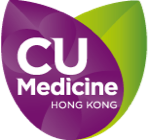Background & Aim
Inflammatory bowel disease (IBD) is an emerging disease especially in Asia, Hong Kong is one of the top 5 incidence areas. Despite the various conventional treatments, traditional medicine (TM), complementary and alternative medicine (CAM) have been reported to be used for IBD in western countries, yet very few published data in Asia.
Methods
This is a cross-sectional self-administered survey conducted from April 2018 to May 2018 in Hong Kong. Clinic and community subjects were invited. The survey contained the questions about subjects’ demographics, IBD-related, hospitalization, bowel resection, kind of TM and CAM treatment. Univariate analysis was used for the comparison between users and non-users; if p-value <0.05, multiple logistic regression was used to find the predictors of using TM or CAM.
Result
353 subjects (female: 44.2%; mean age: 42.9±14.4) participated in the survey. Among them, 133 (37.7%) patients had received or taken TM or CAM. Female, age, education, household income, disease status, use of steroid and immunosuppressants were significant variables (p<0.05) for taking TM or CAM (Table 1). After adjustment, female (OR 2.30, 95% CI 1.37-3.84), tertiary school or above (OR 5.92, 95% CI 1.78-19.7) and steroid use (OR 2.3, 95% CI 1.29-4.09) were the significant predictors. Among all TM and CAM treatments, traditional medicine (71.4%), probiotics (50.3%), vitamins/minerals (39.8%) were used most frequently.
Conclusion
In this first patients’ self-report on the use of TM or CAM for IBD in Asia, the prevalence of using TM or CAM in Hong Kong is comparable to western countries. Predictors are female, tertiary education or above, and steroid use. Moreover, traditional medicine, probiotics, vitamins/minerals were the top three commonest treatments. For more understanding, further studies on both patients’ and doctors’ perceptions and practices are warranted.





